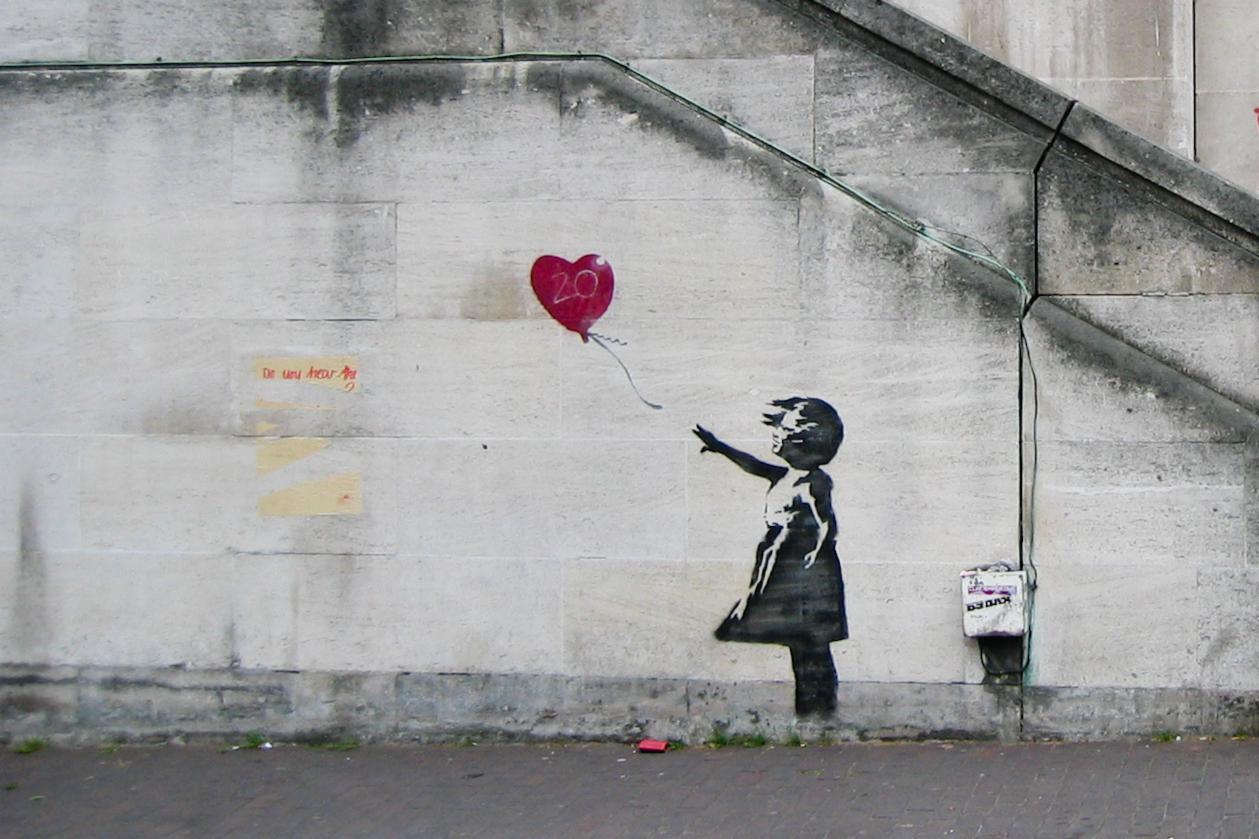Graffiti is more than just colorful designs covering city walls or the subject of debates about art versus vandalism. Graffiti is a form of visual communication that has evolved over centuries, leaving its mark on history and the urban landscape.
A Glimpse into Graffiti’s Past
Graffiti’s roots trace back to ancient times when our ancestors left their marks on cave walls. The Catacombs of Rome and the ruins of Pompeii are testament to the early human impulse to communicate through visual symbols and words. These inscriptions, though primitive by today’s standards, serve as glimpses into the lives and thoughts of those who came before us.
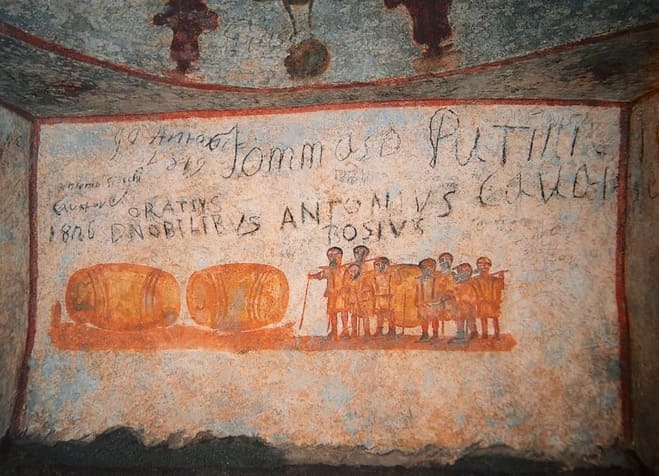
Early graffiti in the Catacombs of Rome. Image credit: Through Eternity
Yet, the term “graffiti” has evolved considerably over the centuries. Initially, it referred to writings or drawings etched on surfaces. For a prolonged period, it carried connotations of vandalism, synonymous with unauthorized defacement of public or private property. However, as time has passed, graffiti’s perception has shifted.
From Vandalism to Artistry
While graffiti was once synonymous with unlawful destruction, it’s gradually gaining recognition as a form of artistry. However, it’s crucial to note that public opinion on graffiti remains divided. Not everyone readily accepts graffiti as art, and its legality varies from place to place.
Graffiti art takes the techniques and styles of street graffiti and transports them to other mediums, broadening its artistic horizons. Still, the distinction between graffiti and graffiti art becomes more apparent when graffiti leaves the urban canvas and finds its place on more traditional platforms, such as canvases or gallery walls.
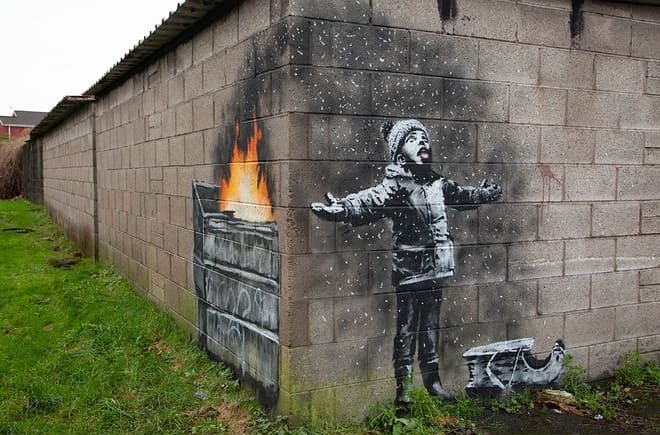
Banksy’s “Snow” graffiti in England. Image credit: Official Banksy Website
Graffiti remains a predominantly urban and public art form. However, in recent years, artists like Banksy have exhibited graffiti-style paintings in gallery and museum spaces, bridging the gap between street art and the art establishment.
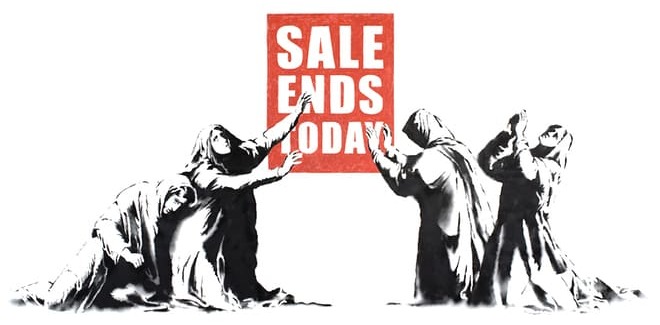
Banksy’s fine art “Sale Ends Today.” Image credit: Official Banksy Website
The Birth of a Movement
Graffiti has deep historical roots, dating back to the dawn of human civilization. Early graffiti artists expressed themselves through primitive drawings and symbols, just as modern taggers and street artists do today. During World War II, American soldiers, British and Australian counterparts, embraced graffiti as a form of camaraderie, leaving their marks along their routes.
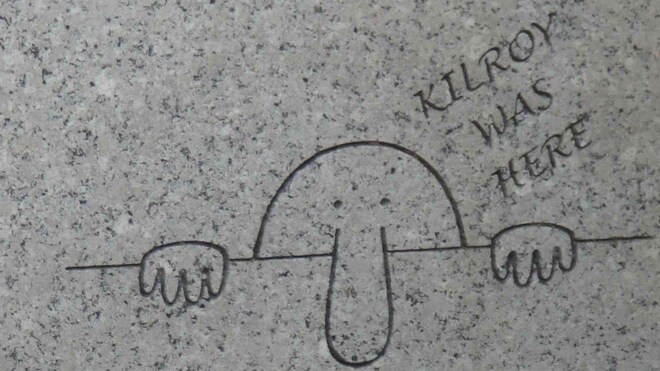
Graffiti by American soldiers seen throughout World War II. Image credit: National Park Service
However, it wasn’t until the 1960s that graffiti emerged as the modern, widely recognized form we know today, often referred to as hip-hop graffiti. This urban art movement gained traction in cities like Philadelphia and New York, with the invention of aerosol spray paint in 1949 becoming a game-changer. Graffiti artists embraced the affordability and portability of spray cans, making it the preferred medium for modern graffiti.
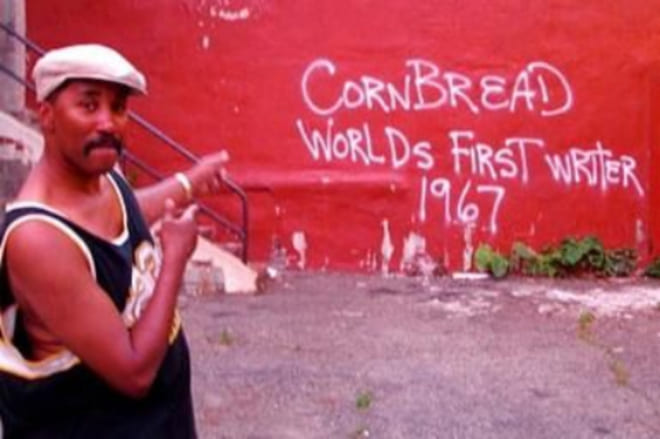
Graffiti pioneer Darryl McCray, known as “Cornbread.” Image credit: STRAAT Museum
Historical graffiti often relied on carving or painting, while contemporary graffiti continues to lean on the iconic spray paint. In addition to spray paint, graffiti artists also employ markers, stickers, and wheatpaste to craft their works. Graffiti culture revolves around making one’s name or message visible, leaving a mark for fellow artists and taggers to acknowledge within the community.
The Pioneers of Graffiti Art
While pinpointing the exact origin of graffiti art is challenging due to its transient nature, one figure often cited as a pioneer in the modern graffiti scene is Darryl McCray, known as “Cornbread.” In 1965, a 12-year-old Cornbread began writing his nickname on any available surface in Philadelphia. This act inadvertently initiated a movement that spread like wildfire, leaving its indelible mark on the urban landscape.
Banksy represents contemporary artists who have taken graffiti off the streets and into different artistic mediums and settings. His works have graced traditional canvases, but they have also ventured into unconventional territories like helicopters, cars, handbags, escalators, and many other spaces.
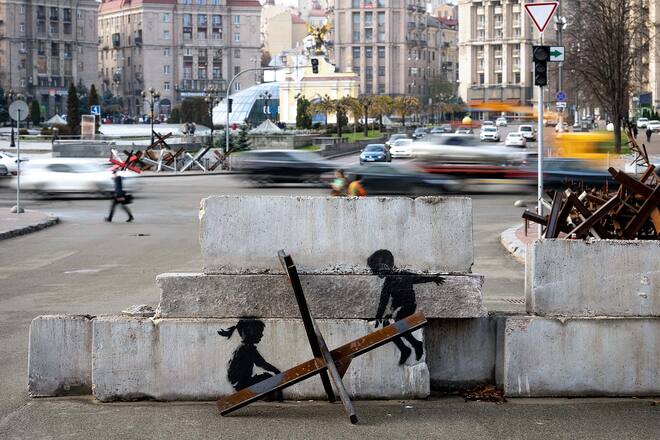
Banksy street graffiti in Ukraine. Image credit: Official Banksy Website
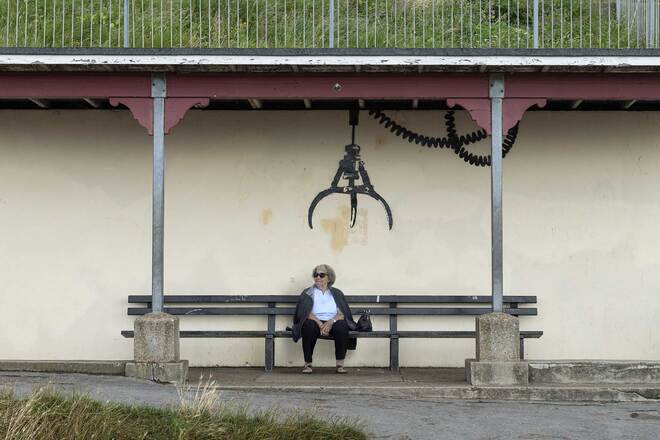
Banksy street graffiti claw. Image credit: Official Banksy Website
Types of graffiti
The art of graffiti includes various sub-styles and forms of expression. From tags that serve as artists’ signatures to the elaborate creations of 3D graffiti, each style carries unique characteristics and history. Some of the different types of graffiti are
- Tagging
- Throw-ups
- Blockbusters
- Wildstyle
- Stencils
- Poster or Paste-Up
- Stickers or Slap
- Pieces
- Calligraffiti
Tagging
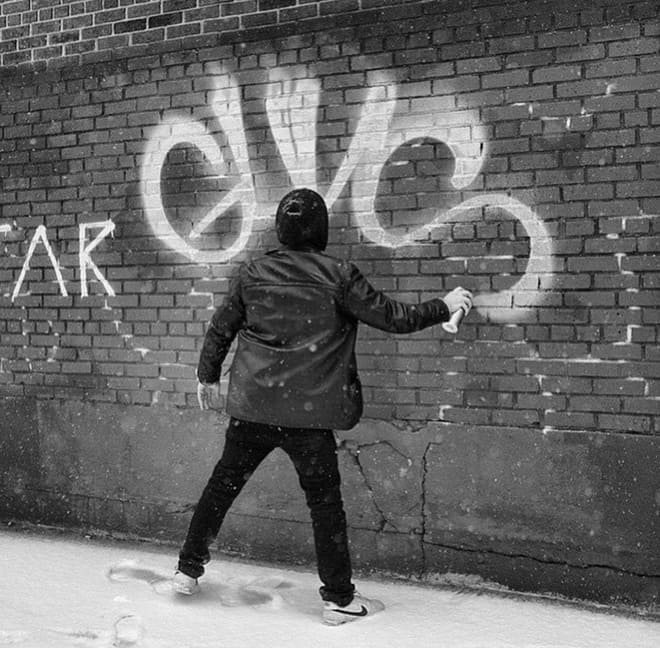
Graffiti tagging on a brick wall (Artist unknown)
Alright, let’s talk about tagging—it’s the source of all graffiti styles. The execution is super simple and super recognizable. Typically done with a spray can and just one color, they throw down their tag name or a cool symbol. It’s the graffiti version of signing the guestbook, and legends like Cornbread took it to the next level, breaking into the Philly Zoo and tagging an elephant with “Cornbread Lives” back in the ’60s.
Throw ups
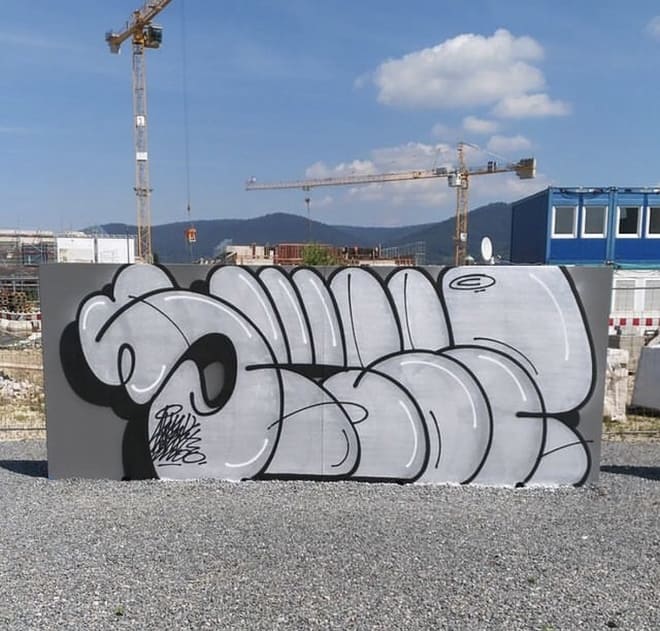
Throw up graffiti piece (Artist unknown)
Now, onto throw-ups—the big, bold sibling of tagging. If tagging is the foundation, throw-ups are the next evolution. They’re not just bigger; they’re more complex, rocking a variety of paints and colors. Artists like Eine, Twist, and Iz the Wiz have turned throw-ups into an art form, creating eye-catching statements that are impossible to ignore in the graffiti scene. It’s like tagging’s rebellious cousin, making a statement that’s larger than life.
Blockbuster: Graffiti’s Grand Canvas
Next up, let’s talk blockbusters—the grand canvases of the graffiti world. Stepping up from throw-ups, blockbusters are like the Picasso of street art, taking up massive spaces like entire walls. Despite their size, blockbusters are still crafted in a relatively short time, with artists like Eggs, Nekst, and Katsu using block-style lettering and rollers to create these larger-than-life graffiti masterpieces. It’s like graffiti on steroids, making an impact that’s both bold and swift.
Wildstyle
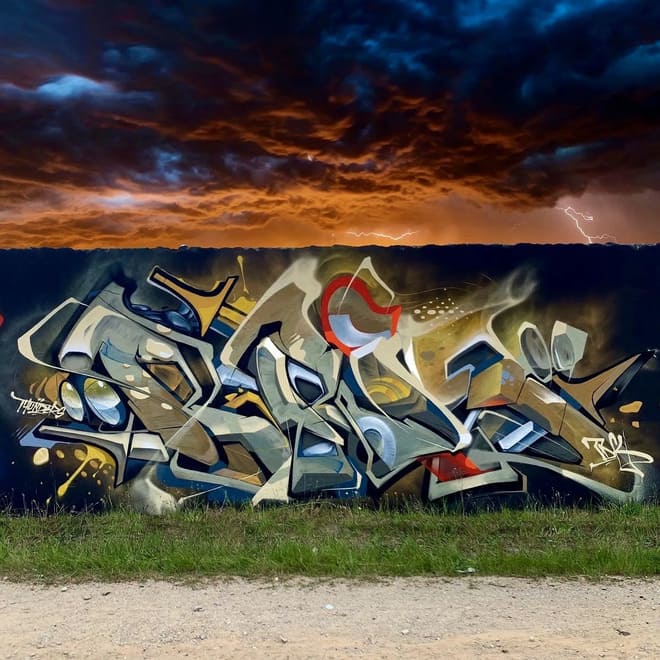
Wildstyle graffiti mural by Australian artist Bray. Image credit: Helio Bray
Don’t expect to read it easily; wildstyle takes the alphabet to a whole new level of complexity. Imagine intricate fonts resembling abstract art, with letters interlocking, spikes shooting out, and decorative elements creating a visual feast. Dondi White, Daze, Saber, Comet, Blade, and Futura 2000 are the maestros of wildstyle, turning letters into a mesmerizing form of expression that challenges the conventional norms of graffiti.
Stencils
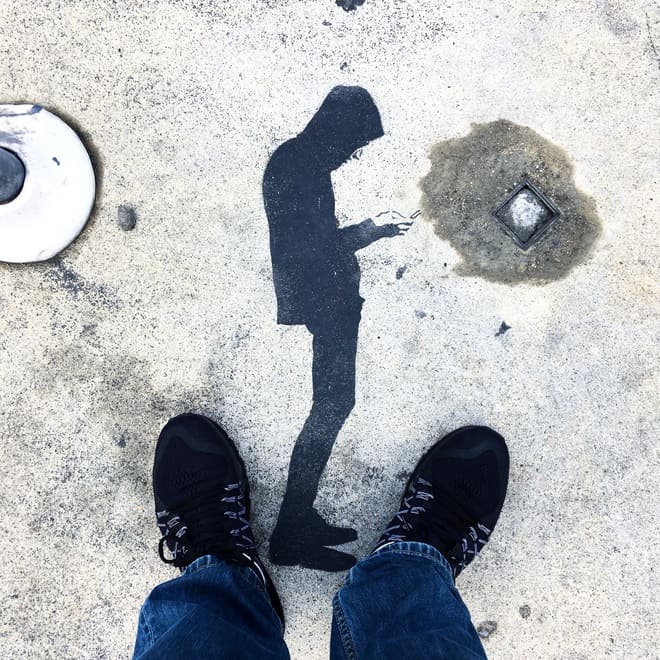
Stencil graffiti on the ground of a figure standing and looking at his phone (Artist unknown)
The game-changer that moved graffiti into the mainstream. Some consider it a bit on the lazy side, involving crafting shapes with paper and cardboard, then applying them with spray paint or rollers. However, it’s precisely this simplicity that makes stencils a powerful tool for quick replication and widespread dissemination of images. Notoriously, Banksy became synonymous with the stencil style, gaining fame for iconic pieces like “Girl with Balloon” and “Flower Thrower.” While some within the graffiti culture may question the skill involved in stencils, there’s no denying its significant impact, especially when wielded by artists aiming to convey political or social messages to a broader audience.
Poster or Paste-Up
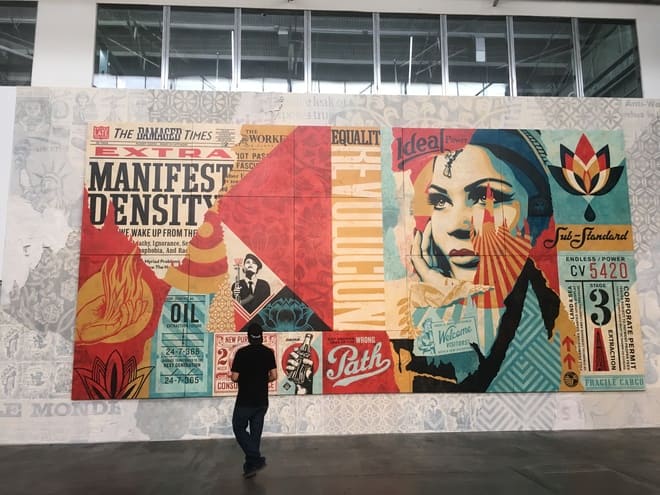
Paste up style graffiti mural by Shepherd Fairey at his art show in L.A “Damaged”
Artists behind this style create their artwork at home and then strategically paste it up on walls and public spaces, often without permission, classifying it as graffiti art. Similar to stencil graffiti, posters or paste-ups allow for replication and mass production, making them a powerful tool for spreading artistic messages. Wheat paste, a key element in this style, involves a mixture of wheat flour or starch with water to adhere paper imagery to surfaces. While it leans more towards street art than traditional graffiti, posters or paste-ups often carry a strong social or political message, serving as a canvas for activism. Notable artists in this genre include Eddie Colla, Lost Hills, and Pyramid Oracle.
Stickers or Slap
In the world of graffiti, stickers or slaps offer a compact yet impactful canvas for artistic expression. These mini masterpieces, unlike posters or paste-ups, skip the need for paste and are smaller in scale. Some stickers are as simple as hand-drawn tags on sticky labels, while others showcase intricate designs created through computer graphics. Renowned sticker artists like Shepard Fairey, ObeyGiant, and Ben Frost have elevated this form, turning it into a unique avenue for artistic exploration. Originating from New York, sticker art has spread globally, transcending traditional graffiti by not only serving as a personal tag but also as a platform to address social issues and advocate political agendas. Despite its smaller footprint, sticker bombing remains a noteworthy and distinctive facet of the graffiti subculture.
Pieces
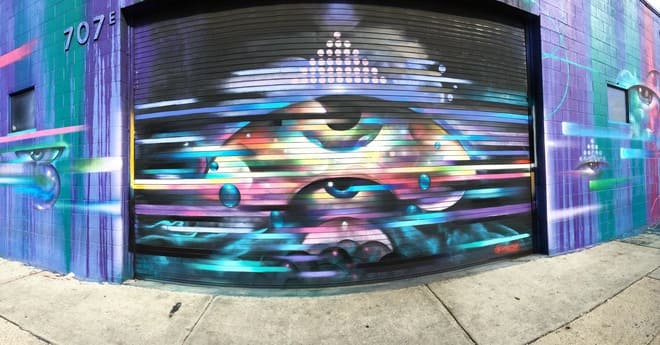
“Piece” mural by Vyal in the Arts District in Downtown L.A
The term “piece” isn’t just an abbreviation; it stands for masterpiece, and it’s the genre that transformed graffiti from a perceived crime to a recognized art form. Executed freehand and painted with a minimum of three colors, these artworks are a testament to the skill and dedication of graffiti artists. Pieces go beyond the simplicity of tags, often featuring intricate details, 3D effects, shadows, backgrounds, and sometimes even characters, showcasing the artist’s unique style. While the process of creating a piece is time-intensive, taking significantly longer than a tag, the result is a vibrant and visually striking piece of public art. Notably, artists like Daze, Lady Pink, Taps & Moses, and Horfe have made their mark in the graffiti world by mastering the art of pieces. Despite the illegal nature of painting in public spaces without permission, a well-executed piece not only gains respect from fellow artists but may also achieve a level of public acceptability, sometimes being perceived as street art assumed to have been created with permission.
Calligraffiti
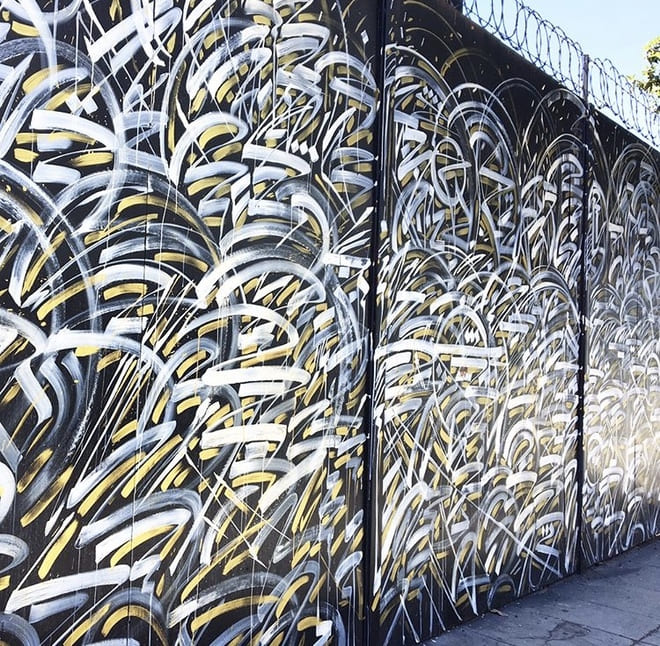
Calligraffiti mural by Defer in front of the Container Yard in the Arts District in Downtown L.A
Calligraffiti, a combination of traditional calligraphy lettering and graffiti culture, offers a unique form of artistic expression. Artists use various mediums, including calligraphy marker pens, spray paint with calligraphy caps, and paintbrushes, allowing them to create a diverse range of pieces. From tags to elaborate murals, calligraffiti bridges the gap between classic calligraphy and the vibrant world of graffiti, showcasing the boundless creativity within this distinctive art form. Explore the captivating intersection of lettering and urban expression on our dedicated What is Calligraffiti page.
Conclusion
Graffiti is a multifaceted art form with deep historical roots and a vibrant contemporary presence. It challenges conventional notions of art and self-expression, representing rebellion, political statements, and the voices of the unheard. While debates about its legality and artistic merit persist, graffiti remains an integral part of urban culture, leaving its mark on walls, hearts, and minds worldwide.



